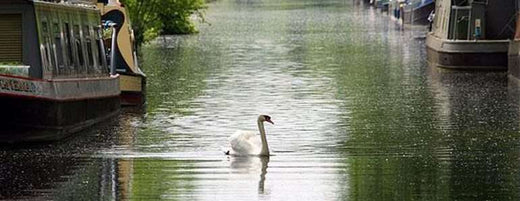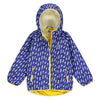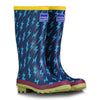
Our top 5 Canal & River Trust walks!
We're super excited for our partnership with Canal and River Trust over 2016! So to celebrate we bring you our top picks of canal walks across the UK!
With stunning canals and rivers dotted all across the country, see the amazing amount of beautiful family walks & top kit to accompany you on them here!
1) Pocklington
Virtually the entire length of the Canal falls within one of three Sites of Special Scientific Interest (SSSI). You'll find herons, mute swans, mallards, kingfishers and dragonflies here. During spring and summer these meadows are a blaze of colour supporting many species of wildflower and providing a home for hundreds of nesting wildfowl and waders. In winter these same meadows support even larger numbers of wildfowl, with birds coming from as far away as Siberia and Poland. The canal was constructed between 1815 and 1818 to enable prosperous local farmers to transport their produce to the rapidly expanding towns of West Yorkshire. A relatively late canal, it operated for only a short period of time and there are few of the traditional warehouses and other canal side structures that are normally associated with long established commercially successful canals. It carried coal, lime, fertiliser and road stone for use in the market town of Pocklington and surrounding area. The canal was bought by the York and North Midland Railway Company in 1845 and gradually run down. In 1959, controversial plans to use the canal as dumping ground for ‘harmless sludge', prompted the formation of the Pocklington Canal Amenity Society (PCAS). Since 1969 PCAS volunteers have restored and maintained sections of the canal, fundraising, clearing the towpath and rebuilding locks and bridges. They themselves recommend 'Muddy Boots', right up our alley! So we've chosen our PuddleStomper wellies! Our Puddlestomper wellies are stylish and durable and come in plain colours and unique print design and will be sure to keep young PuddleStompers happy!
2) Welshpool
Welshpool lies on the Montgomery Canal known as 'the Monty'. Regularly voted the prettiest canal, the Welshpool section was one of the first to be restored for pleasure use after being abandoned during WWII. As well as it's fascinating background, the canal is home to wildlife such as ducks, mute swans and red kite. The Monty was originally planned to run from Llanymynech to Newtown via Welshpool. It was built mainly to transport lime for use as a fertiliser on fields to produce better agricultural land. Many promoters were local landowners who hoped to make money from bigger yields of crops rather than shares in the canal. We recommend our Jackets for a visit to this scenic and colourful spot.
3) Consall Forge
Consall Forge, set alongside Consall Nature Park, is a beautiful location to start enjoying your local waterways. Take a picnic and spend a relaxing afternoon at the canalside, keeping an eye out for passing boats and local wildlife. Go for a leisurely family stroll and explore the local history while following one of the nature park trails! Why not try your hand at canoeing or even pond dipping, a local favourite past time, when the weather picks up! For now enjoy fishing and looking for swans, ducks and coots/moorhens with birds of prey also a common site in the area! To explore the many nature trails this site has to offer we recommend our 3 in 1 Explorer Jacket!
4) West India Dock
West India Docks were built in 1802. Here, for nearly 200 years, ships unloaded rum, sugar and coffee from the Caribbean. Cargo was loaded into warehouses, transferred on to barges and delivered all over the country via the canal system. West India Docks were the first purpose-built docks to be built there as surprisingly so, London was once the busiest port in the world. It closed in 1980 and the old docks were regenerated into something completely new and modern; Canary Wharf, London's hi-tech business area. Although situated near central London, an array amazing wildlife can be seen at this spot, including:
- Swans and ducks
- Cormorants are daily visitors here standing on the dock walls holding their wings out to dry or diving to the bottom in search of fish. They bring the fish to the surface to swallow, sometimes with great difficulty due to their large size.
- Tiny pied wagtails can be seen all around the docks using their long wagging tails to help them skip and jump after flying insects.
- Coots are one of the most adaptable of water birds using any bit of floating debris as a nest site. You can spot their unusually shaped feet as they dive for fish.
- The most common fish in the docks are smelt, a favourite food of the cormorants. These small silvery fish are noted for their distinct smell of... cucumber!
- A happy common grey seal has become quite a regular sight, swimming around the quay enjoying the cast-offs from Billingsgate fish market!
For a leisurely family stroll we would say to bring one of our cute Jackets!
5) Bradford-on-Avon Wharf
Swans, moorhens, coots and ducks are all common sights along the length of the canal. You may also spot water voles, and once the sun has finally set, bats can be seen feeding on flying insects above the canalDucks. The canal is also home to:
- Bats
- Kingfishers
- Moorhens
- Heron
- Water voles
Alongside the stunning greenery and wildlife this historic wharf has to offer, there is also a lock cottage, 14th-century timbered tithe barn and 11th century Saxon Church, which is one of the most complete Saxon buildings still in existence, to visit. The town of Bradford-on-Avon is a history lesson brought to life. Highlights include the remains of an Iron Age fort and a Roman villa just outside the town! To stroll around and see all the amazing wildlife we say to wear our thermal base layers underneath to stay warm & toasty on a cold day, or to wear as a comfy t-shirt under our Cosy Cloud Fleece on a milder winter day. Our bestselling baselayers are super soft and warm whilst keeping moisture out. With flat lock seams to make them extra comfy and thumb holes to hook through to keep out brisk winter winds. So grab those winter jackets, thermal base layers and muddy boots and get exploring!








